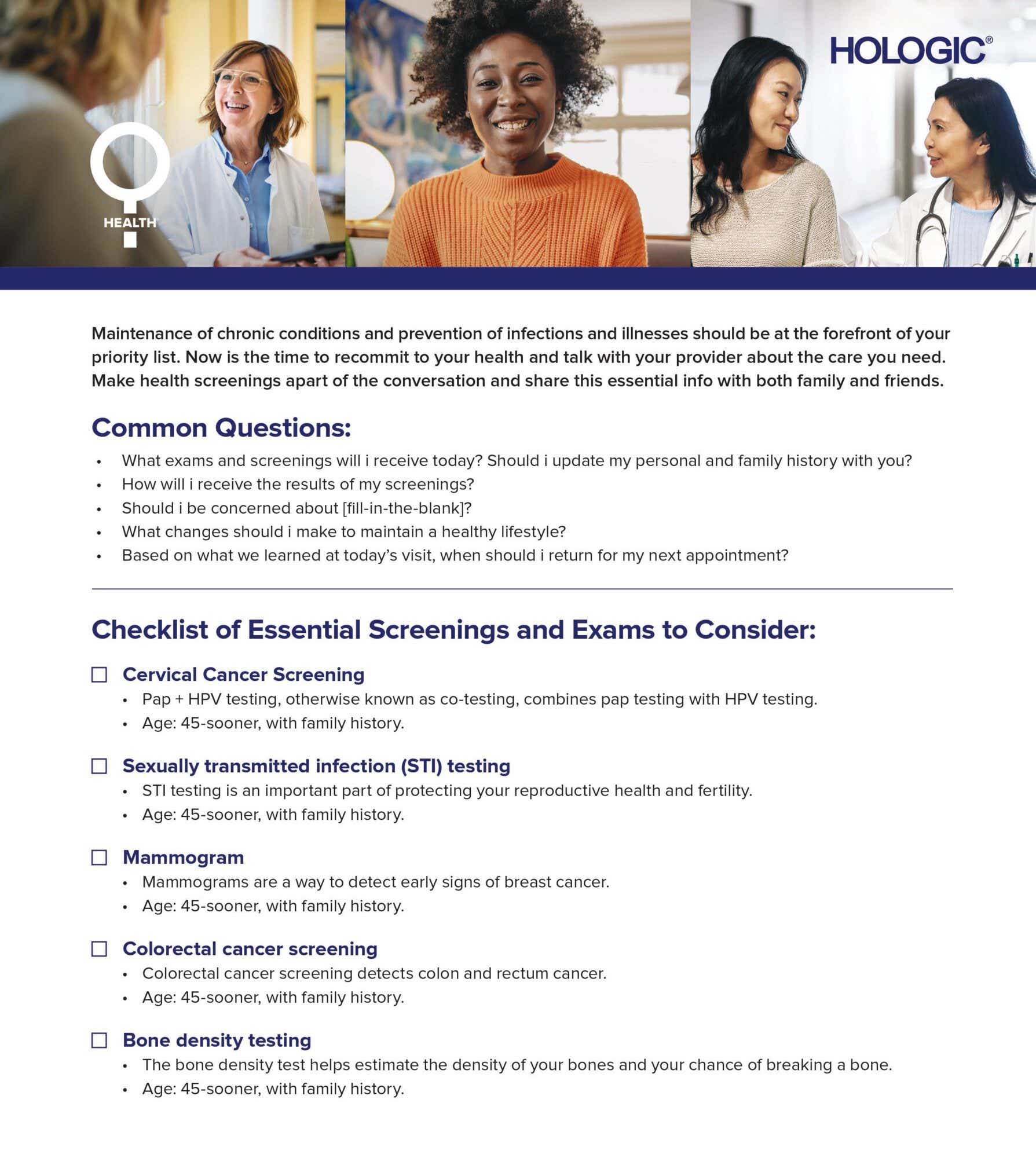When the COVID-19 pandemic hit, people all over the world learned a new phrase: “shelter in place.” Many of us were forced to delay or cancel visits with our doctors, including annual preventative screenings and non-essential surgeries.
For women, this meant missing their annual preventative care appointments. A report from the Kaiser Family Foundation, released in May 2021, noted that 46 percent of women put off preventative care and 32 percent skipped a medical test recommended by their doctor. My pandemic experience mirrors these statistics. Most of my patients are extremely consistent with their health care, but when the pandemic hit, in-person visits dropped significantly. During this time I saw a decrease in appointment frequency, and my practice pivoted from in-person to telehealth visits to accommodate our new way of life.
According to a recent Prevent Cancer survey, with pandemic restrictions lifted, 90 percent of women have returned to social activities, but only 48 percent have visited their doctor. Trust me, I understand and can relate to the desire to reconnect with loved ones. But now is also the time to reconnect with ourselves. As we all work to resume life as close to “normal” as we can, we need to start getting our appointments back on track.
I tell my patients that not seeing their doctor for almost two years can have a negative impact on their health. Maintenance of chronic conditions and prevention of infections and illnesses should be at the forefront of your priority list. Now is the time to recommit to your health and talk with your provider about the care you need.

Questions to Ask When Returning to the Doctor
You may have concerns that have popped up since your last visit. Here are a few questions I suggest you ask at your next visit:
What exams and screenings will I receive today? Should I update my personal and family history with you?
This is a great way to understand what will take place and next steps for your health update. Updating your personal and family history may reveal the need for additional testing that would have previously been overlooked.
How will I receive the results of my screenings?
Ask this question to make sure you understand next steps and potential follow-up details for your screenings. If you have challenges with understanding your results, schedule a follow-up appointment to review your results and ask questions.
Should I be concerned about [fill-in-the-blank]?
Share what’s on your mind! We can’t answer if you don’t ask, so let us know about that mystery pain, sickness, or concern, so we can help. Trust me, we have heard it all — no question is too big or small for you to ask. Be sure to write your concerns down so you don’t forget.
What changes should I make to maintain a healthy lifestyle?
After we cover the basic needs of preventative care, I welcome the chance to talk about how you can improve your health further and create healthy lifelong habits. I encourage patients to be intentional about their health and wellbeing by developing a wellness plan and goals.
Based on what we learned at today’s visit, when should I return for my next appointment?
Use this as an opportunity to plan for and schedule your next visit so you don’t unintentionally lapse in returning for these important visits!
Essential Exams and Screenings to Consider
It can be tricky to balance priorities in life, but as we welcome you back to the office, I’d like to share some helpful tips on which screenings and appointments to prioritize.
Physical Exams
This exam gives your provider a good idea of your overall health and determines if you’re at risk for any health problems. The type of exams you may receive include:
Breast Exam: Your physician will examine your breasts, feeling for lumps or other unusual tissues. Depending on your age and personal/family history this may be followed by recommended breast imaging.
Pelvic Exam: Your healthcare provider will visually examine the outside of your genital area and feel your abdomen for lumps and anything out of the ordinary. You may also receive an internal exam in which your provider may better examine your reproductive organs and take samples needed for testing. Be sure to know what tests are being collected and do not assume that you are automatically being tested for a certain condition or “for everything.”
Screenings
Cervical Cancer Screening
There are multiple tests available for cervical cancer screening:
Pap Test, which involves a simple sample of cells taken from your cervix. These cells are examined to check for pre-cancerous and cancerous cells. For those 21-29 years old, Pap testing alone is recommended.
Pap + HPV testing, otherwise known as co-testing, combines Pap testing with HPV testing. Through these two tests, which are run on the same sample, your provider will determine whether you may have cervical cancer. If you are 30-65 years old, co-testing with PAP + HPV together is recommended.
Sexually Transmitted Infection (STI) Testing
STI testing is an important part of protecting your reproductive health and fertility. Your provider may recommend certain testing based on your age, while other tests may be right for you depending on the presence of symptoms or if you have an increased risk.
The main STIs that are tested for during this portion of your exam are chlamydia, gonorrhea, and trichomoniasis. If you are having any vaginal discomfort or discharge you may also be tested for bacterial vaginosis (BV) and/or yeast infections. You could also receive a test for Mycoplasma genitalium (Mgen) if you have recurrent cervicitis.
Mammograms are a way to detect early signs of breast cancer. This screening takes an X-ray of your breasts to determine any abnormalities that may not be obvious from a clinical exam. If you and your doctor agree, you can have a mammogram every year starting at age 40.
Colorectal Cancer Screening
Colorectal cancer screening detects colon and rectum cancer. This screening typically begins at age 45, or sooner if you have family history. A colonoscopy — a small procedure in which a camera is used to examine your colon — is the most common type of screening method.
Bone Density Testing
The test estimates the density of your bones and your chance of breaking a bone. The test starts in people 65 years or older, or those younger than 65 who have an increased risk of fracture or family history. Your provider can address various ways to protect your bone health, including exercise and age-appropriate levels of calcium and Vitamin D.
When reviewing the above recommendations, be sure to consider your own personal health factors including family history and concerns or changes that you have experienced since your last visit. Having an in-depth conversation with your provider on these topics will make your visit even more comprehensive.
Finding the new normal in the ongoing pandemic and getting back into a new routine can seem a bit daunting. However, your body will thank you for keeping it healthy and up to date on your preventative screenings.
Be sure to speak with your OB/GYN about any additional tests or immunizations that may be right for you!
The information provided on this site isn’t intended as medical advice, and shouldn’t replace professional medical treatment. Consult your doctor with any serious health concerns.









